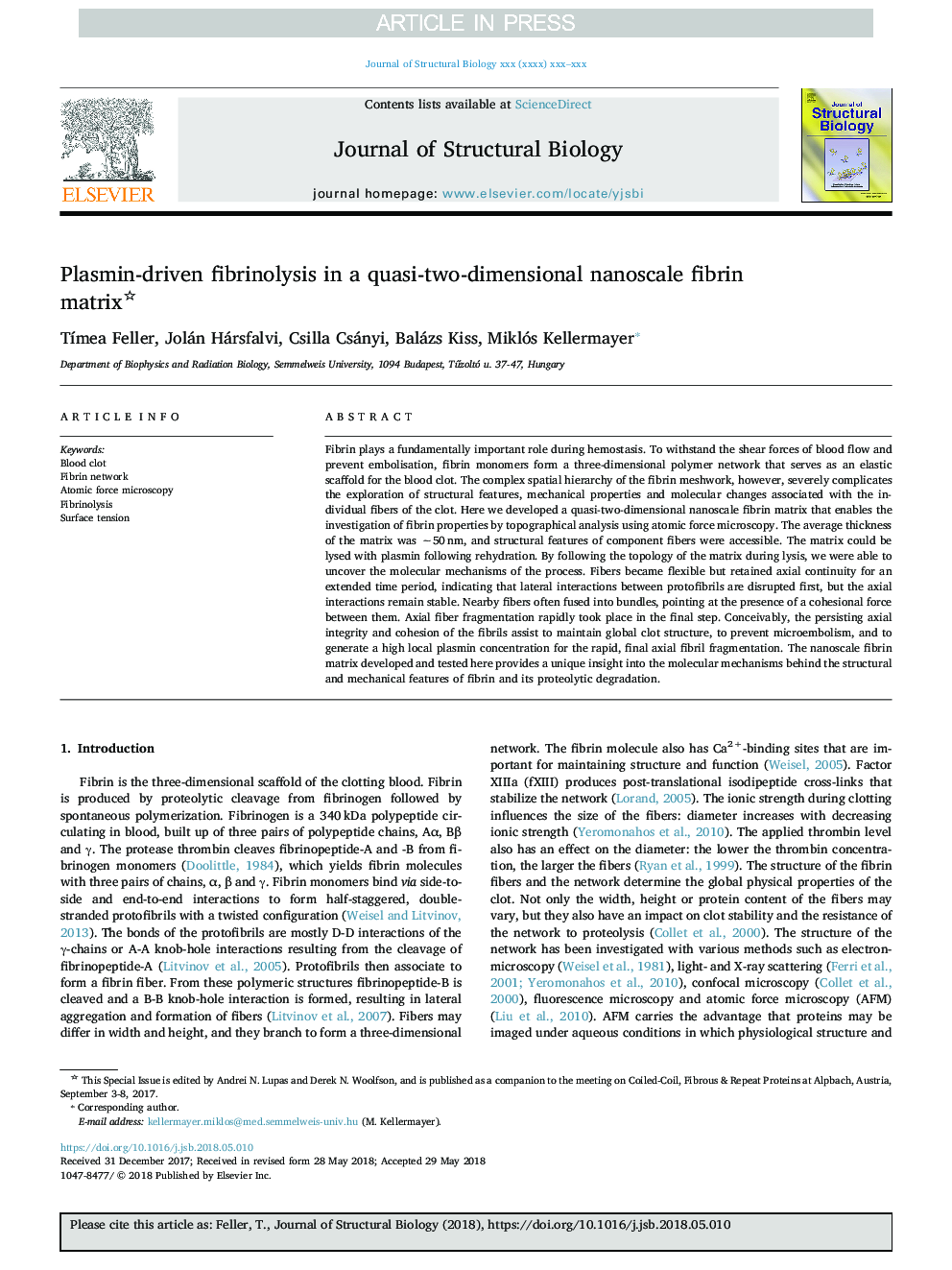| Article ID | Journal | Published Year | Pages | File Type |
|---|---|---|---|---|
| 8648164 | Journal of Structural Biology | 2018 | 8 Pages |
Abstract
Fibrin plays a fundamentally important role during hemostasis. To withstand the shear forces of blood flow and prevent embolisation, fibrin monomers form a three-dimensional polymer network that serves as an elastic scaffold for the blood clot. The complex spatial hierarchy of the fibrin meshwork, however, severely complicates the exploration of structural features, mechanical properties and molecular changes associated with the individual fibers of the clot. Here we developed a quasi-two-dimensional nanoscale fibrin matrix that enables the investigation of fibrin properties by topographical analysis using atomic force microscopy. The average thickness of the matrix was â¼50â¯nm, and structural features of component fibers were accessible. The matrix could be lysed with plasmin following rehydration. By following the topology of the matrix during lysis, we were able to uncover the molecular mechanisms of the process. Fibers became flexible but retained axial continuity for an extended time period, indicating that lateral interactions between protofibrils are disrupted first, but the axial interactions remain stable. Nearby fibers often fused into bundles, pointing at the presence of a cohesional force between them. Axial fiber fragmentation rapidly took place in the final step. Conceivably, the persisting axial integrity and cohesion of the fibrils assist to maintain global clot structure, to prevent microembolism, and to generate a high local plasmin concentration for the rapid, final axial fibril fragmentation. The nanoscale fibrin matrix developed and tested here provides a unique insight into the molecular mechanisms behind the structural and mechanical features of fibrin and its proteolytic degradation.
Related Topics
Life Sciences
Biochemistry, Genetics and Molecular Biology
Molecular Biology
Authors
TÃmea Feller, Jolán Hársfalvi, Csilla Csányi, Balázs Kiss, Miklós Kellermayer,
